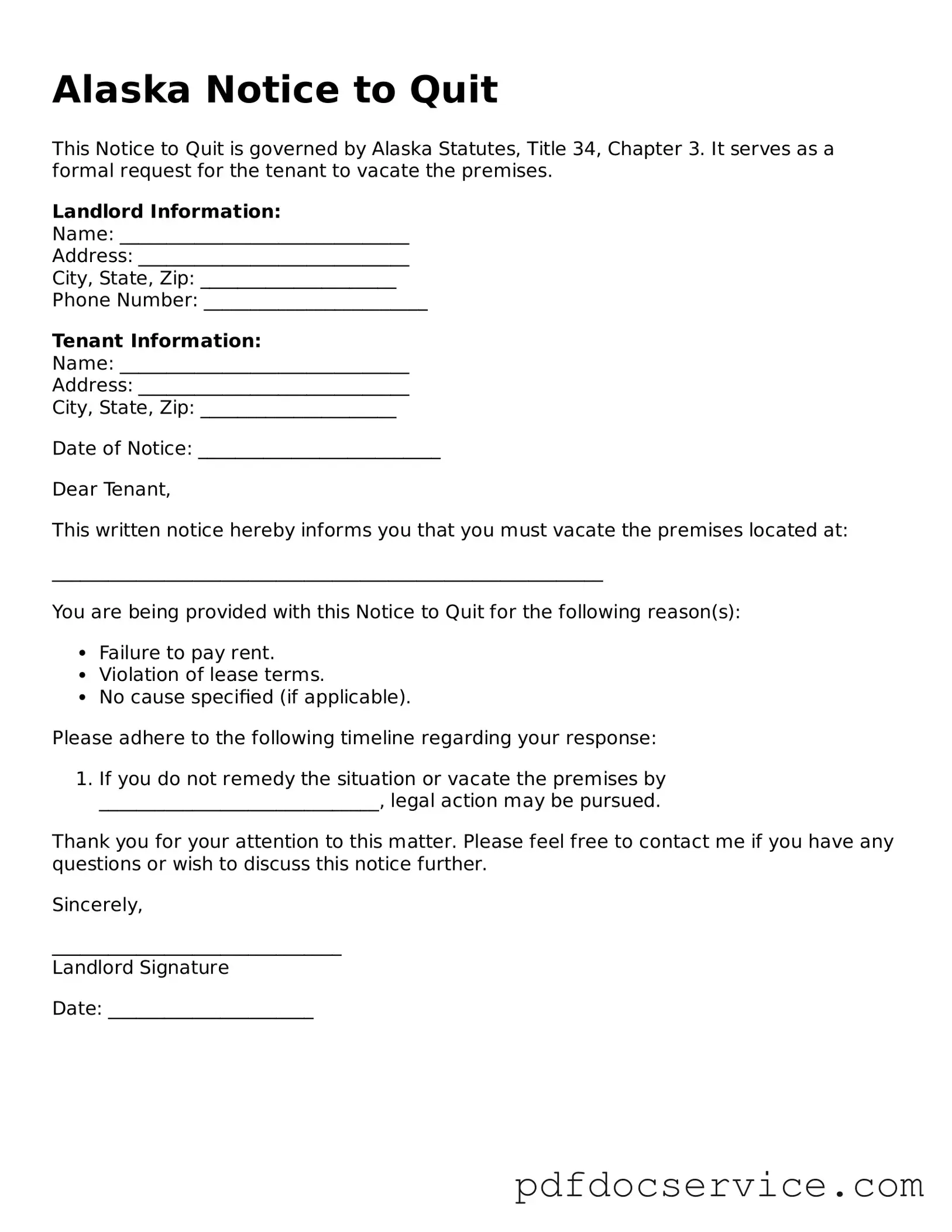The Alaska Notice to Quit form is a legal document used by landlords to notify tenants that they must vacate the rental property. This notice is often a prerequisite for initiating eviction proceedings. It outlines the reasons for the eviction, such as non-payment of rent or lease violations, and specifies a timeframe in which the tenant must leave the property.
When should a landlord use a Notice to Quit?
A landlord should use a Notice to Quit when a tenant has violated the terms of their lease agreement. Common situations include:
-
Failure to pay rent on time
-
Repeated disturbances or violations of property rules
-
Unauthorized occupants or pets
Each situation may require a different type of notice, so it’s important to understand the specific reason for the eviction.
How much notice is required before a tenant must vacate?
The notice period can vary based on the reason for the eviction. Generally, landlords must provide:
-
For non-payment of rent: 7 days
-
For lease violations: 10 days
-
For month-to-month tenants: 30 days
It’s crucial to ensure that the notice period complies with Alaska state law to avoid complications later on.
Can a tenant contest a Notice to Quit?
Yes, tenants have the right to contest a Notice to Quit. If they believe the notice was issued unfairly or without proper grounds, they can respond to the landlord. This may involve communicating directly with the landlord or seeking legal advice. If the matter escalates to court, the tenant can present their case during the eviction hearing.
What happens if a tenant does not comply with the Notice to Quit?
If a tenant does not vacate the property by the specified date in the Notice to Quit, the landlord may proceed with filing for eviction in court. This process typically involves submitting the necessary paperwork and possibly attending a court hearing. It’s important for landlords to follow the legal process to avoid any claims of unlawful eviction.
Is a Notice to Quit required for all evictions in Alaska?
Not all evictions require a Notice to Quit. For example, if a tenant has engaged in illegal activity or caused significant damage to the property, a landlord may be able to proceed with eviction without a notice. However, it is always advisable to issue a Notice to Quit to ensure that the eviction process is clear and legally sound.
